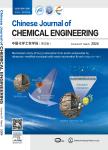The dynamic evolution of aggregated lithium dendrites in lithium metal batteries
The dynamic evolution of aggregated lithium dendrites in lithium metal batteries作者机构:Beijing Key Laboratory of Green Chemical Reaction Engineering and TechnologyDepartment of Chemical EngineeringTsinghua UniversityBeijing 100084China Advanced Research Institute of Multidisciplinary ScienceBeijing Institute of TechnologyBeijing 100081China School of ChemistryThe University of New South WalesSydneyNSW 2052Australia Ufa Institute of Chemistry UFRC RASUfa450054Russia
出 版 物:《Chinese Journal of Chemical Engineering》 (中国化学工程学报(英文版))
年 卷 期:2021年第34卷第9期
页 面:137-143页
核心收录:
基 金:supported by the National Natural Science Foundation of China(22061132002,U1801257,and 21825501) Russell Sage Foundation project(21-43-00006) the National Key Research and Development Program(2016YFA0200102 and 2016YFA0202500) Beijing Municipal Natural Science Foundation(Z20J00043) the Tsinghua University Initiative Scientific Research Program
主 题:Electrochemistry Li dendrites Rechargeable Li batteries In-situ optical microscopy Phase field model Electrochemical engineering
摘 要:Lithium(Li)metal anodes promise an ultrahigh theoretical energy density and low redox potential,thus being the critical energy material for next-generation ***,the formation of Li dendrites in Li metal anodes remarkably hinders the practical applications of Li metal ***,the dynamic evolution of discrete Li dendrites and aggregated Li dendrites with increasing current densities is visualized by in-situ optical microscopy in conjunction with ex-situ scanning electron *** revealed by the phase field simulations,the formation of aggregated Li dendrites under high current density is attributed to the locally concentrated electric field rather than the depletion of Li *** specifically,the locally concentrated electric field stems from the spatial inhomogeneity on the Li metal surface and will be further enhanced with increasing current *** the above two factors with the help of the constructed phase field model is able to regulate the electrodeposited morphology from aggregated Li dendrites to discrete Li dendrites,and ultimately columnar Li *** methodology and mechanistic understanding established herein give a significant step toward the practical applications of Li metal anodes.



